Architect and photographer Tugo Cheng wants to transform the way we see Hong Kong. In the photography series “City Patterns” he captures the city from above, replacing signature shots of skyscrapers with the lines and patterns of his eye-catching aerial images.
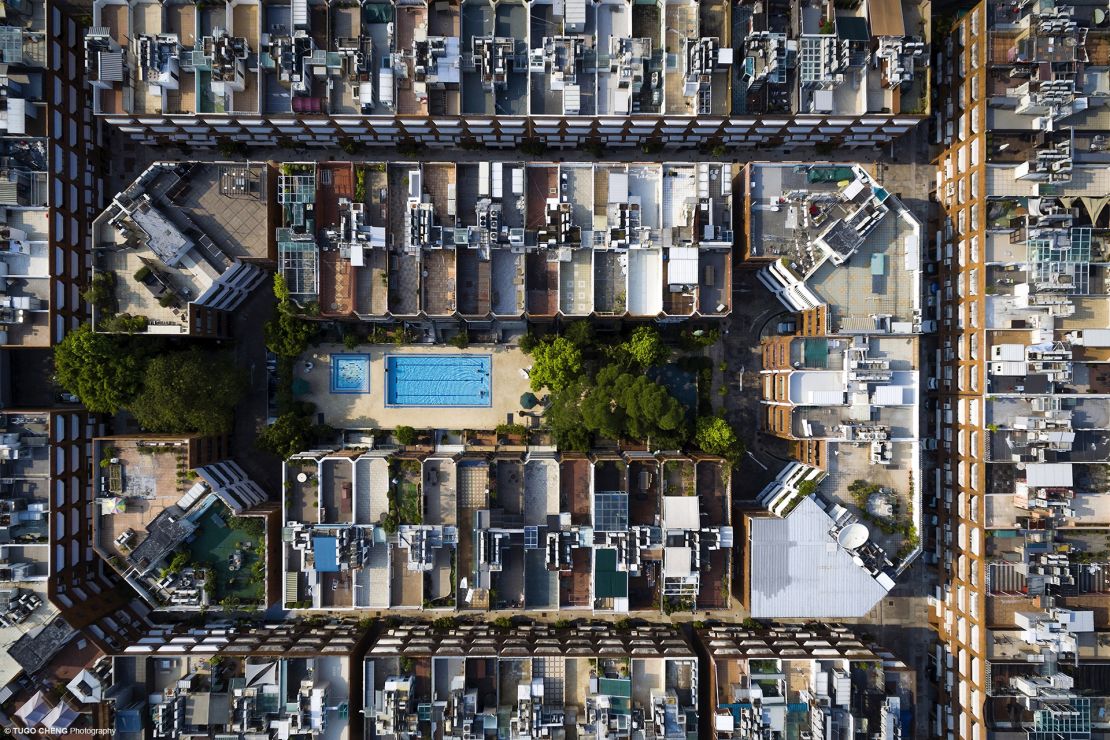
“People from overseas think Hong Kong is about high density and high-rise buildings,” Cheng said. “But I wanted to reveal the hidden geometries in the city.”
A bird’s-eye view
Having grown up in Hong Kong, Cheng knows his subject matter intimately. An architect by training, he started using drones to photograph his vision of a city where leisure, industry and infrastructure collide. As well as shooting downtown areas, Cheng turned his lens toward Hong Kong’s countryside, as well as rarely seen spots like cemeteries, sewage treatment plants and power stations.
“At eye-level, Hong Kong is really quite different from what we (architects) draw – and from what you see with a bird’s-eye view,” Cheng said.
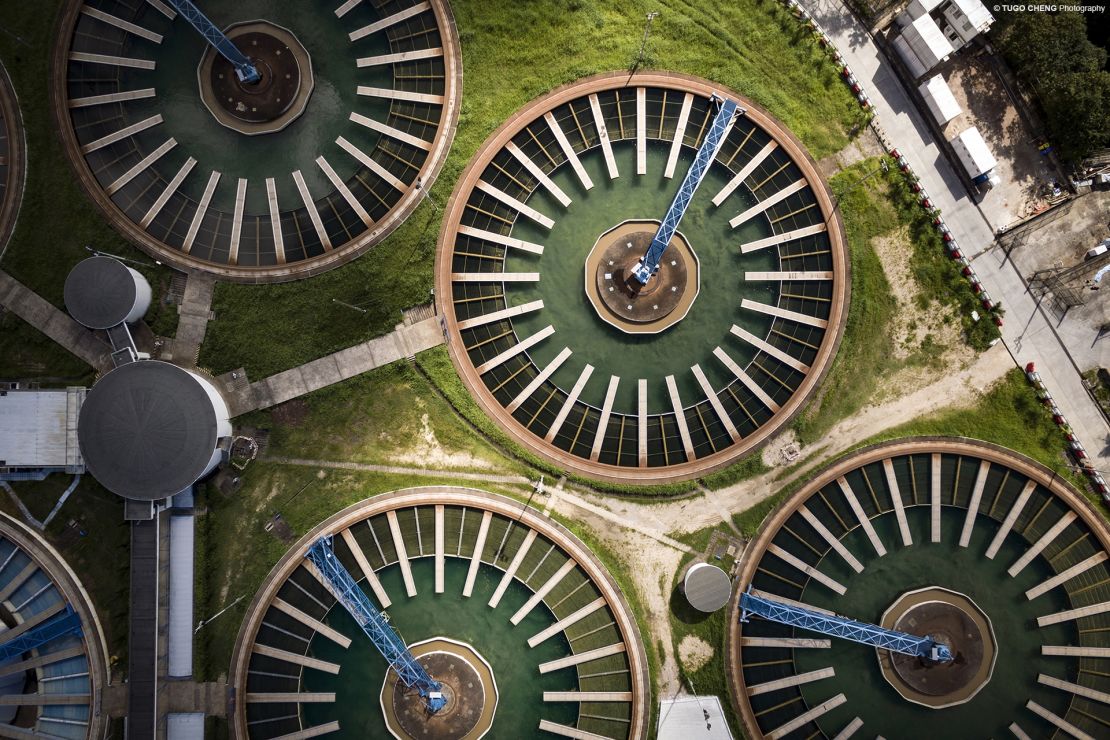
“You have to give up your preconceptions. From above, a beautiful place can be boring and a boring place can be very interesting.”
In his photo “Intersection,” Cheng depicts the city’s sophisticated transport network as a series of railway tracks intersecting with a flyover. “Ferris wheel” portrays circular sewage treatment plants that, when seen from above, resemble a fairground. And “Heatwave” captures a more “relaxed” side of Hong Kong, with multicolored parasols making one of the city’s beaches look like a pin board.
But shooting creatively from above is no easy feat.
When Cheng started experimenting with aerial photography in 2014, he would mount a GoPro on a drone and snap pictures every five seconds. Now, advances in technology mean that he can choose when to shoot in real time, letting him experiment with light and composition.
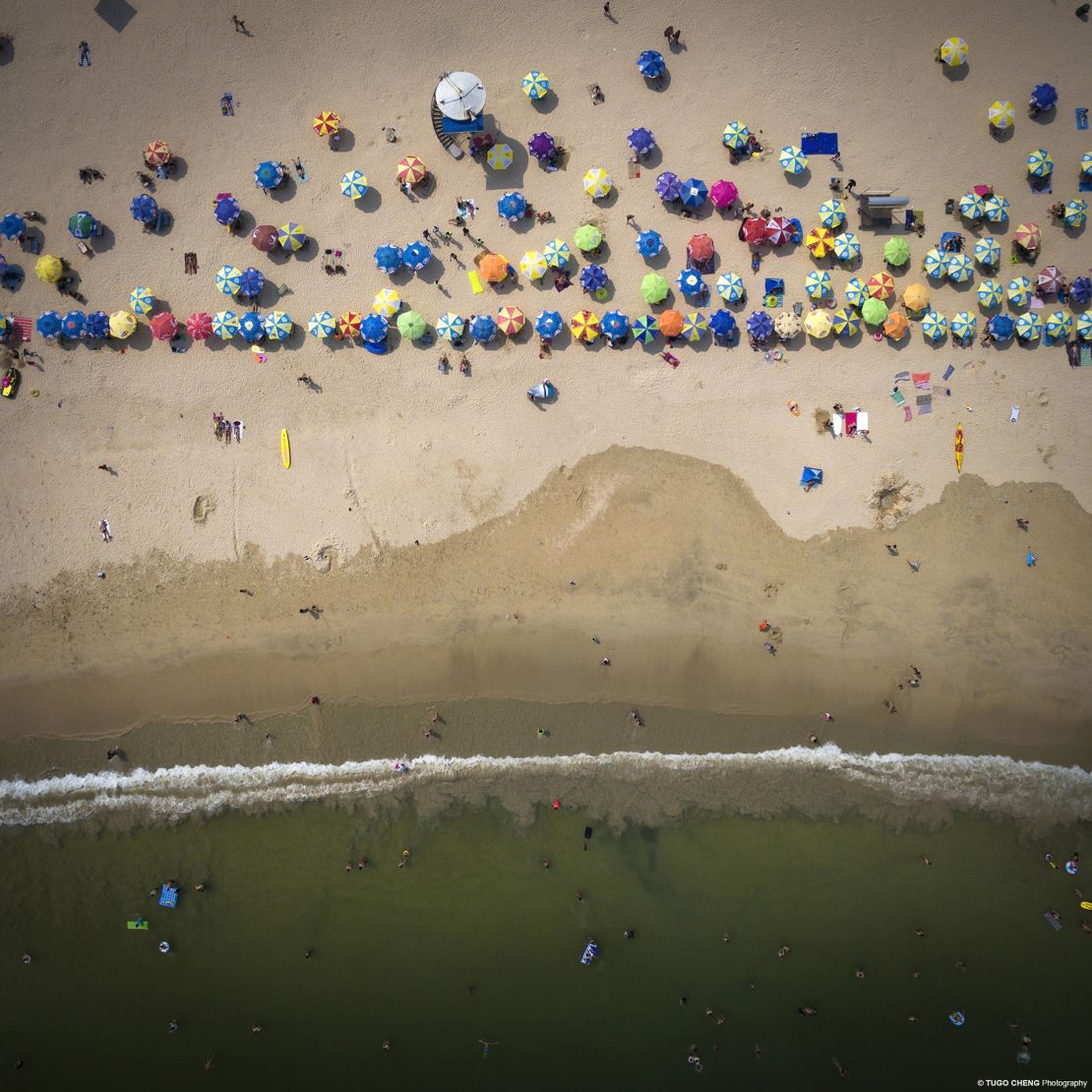
“When you’re taking normal photographs, you’re (capturing) the side elevations of buildings and objects,” Cheng explained. “But when you’re looking down vertically onto a building, you’re taking a planner’s view. So the direction of light and shadows is really important because it gives a three-dimensional feel.”
A new perspective
To offer a sense of scale, Cheng often includes familiar sights – like cars, buses or umbrellas – in his images. In “Six Feet Under,” for instance, a small red car stands out from the cemetery’s green topography. As well as juxtaposing the living and the dead, it attracts the viewer’s eye and puts the individual tombstone plots into scale.
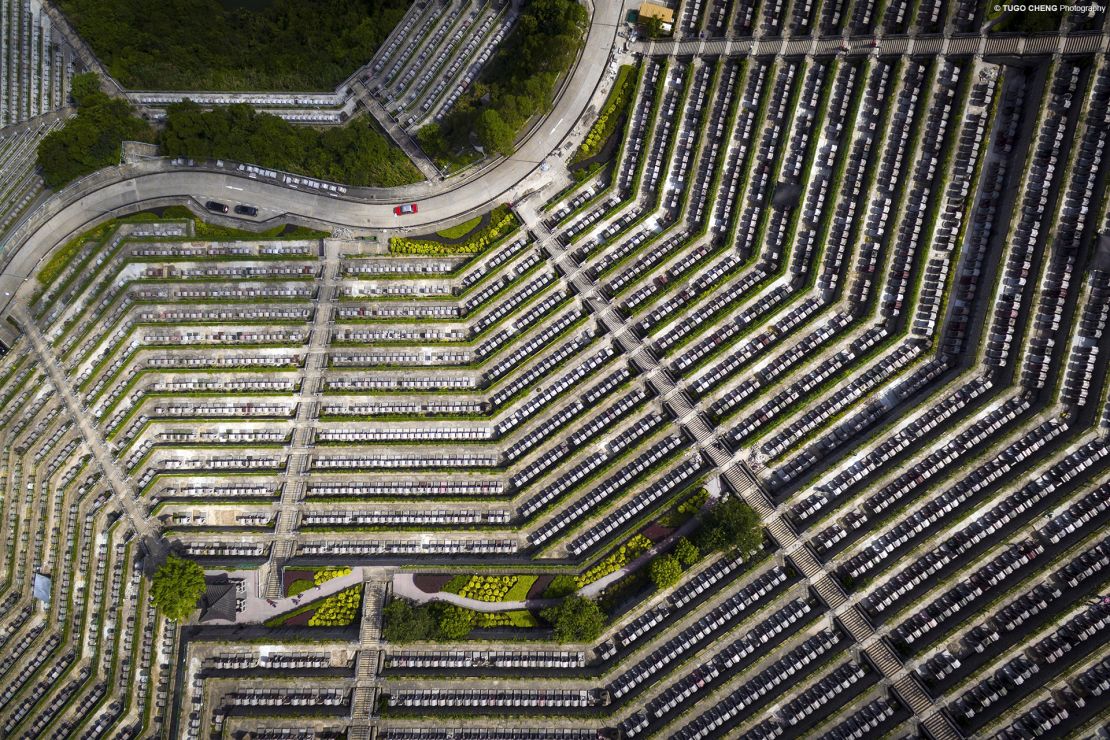
These playful additions also help familiarize landscapes that can be difficult to identify from above. Cheng recalled a colleague being unable to recognize an aerial picture of her own neighborhood.
“It’s because her perspective was different,” Cheng said. “Ultimately, I want to surprise people and trigger them to think beyond the photo.”
Throughout the “City Patterns” series, Cheng strives to convey what makes his city unique. He has shot similar projects in places far afield as Ethiopia, China and the US, but what interests him about Hong Kong – infamous for its expensive real estate and dense population – is how entangled the city is with nature.
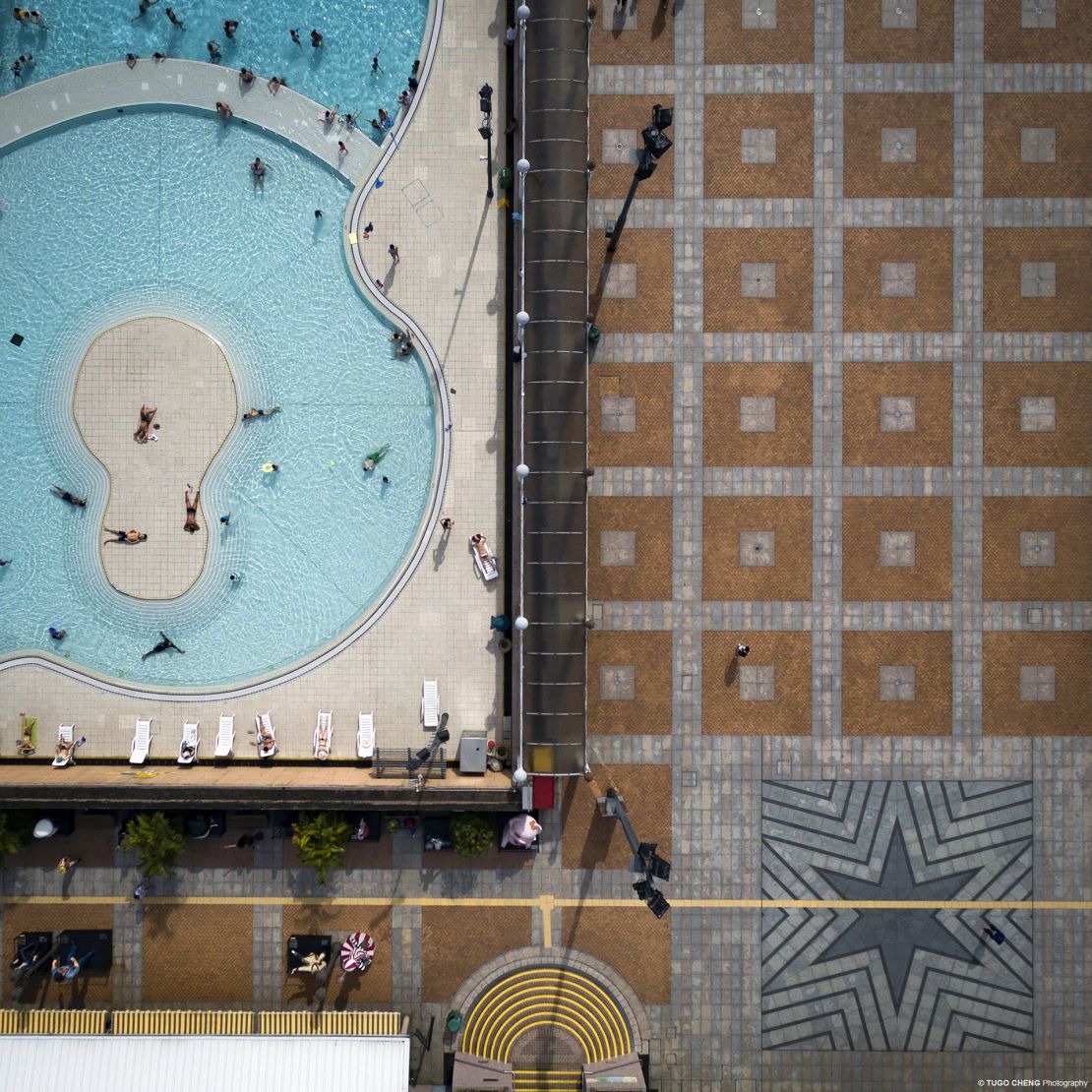
“In some countries, when you go to the countryside, you need to travel a long distance and you see a clear transition from city to suburb, then countryside,” explained Cheng, whose “Six Feet Above” photo, captures the boundary between a large-scale residential development and a collection of fishing ponds. “Hong Kong is very small and compact, so we don’t have that transition.”
“I’ve been to many countries and one of the differences between Hong Kong (and other places) is how the developed and undeveloped land are very close to each other,” Cheng said. “I think this is something we need to treasure.”
















